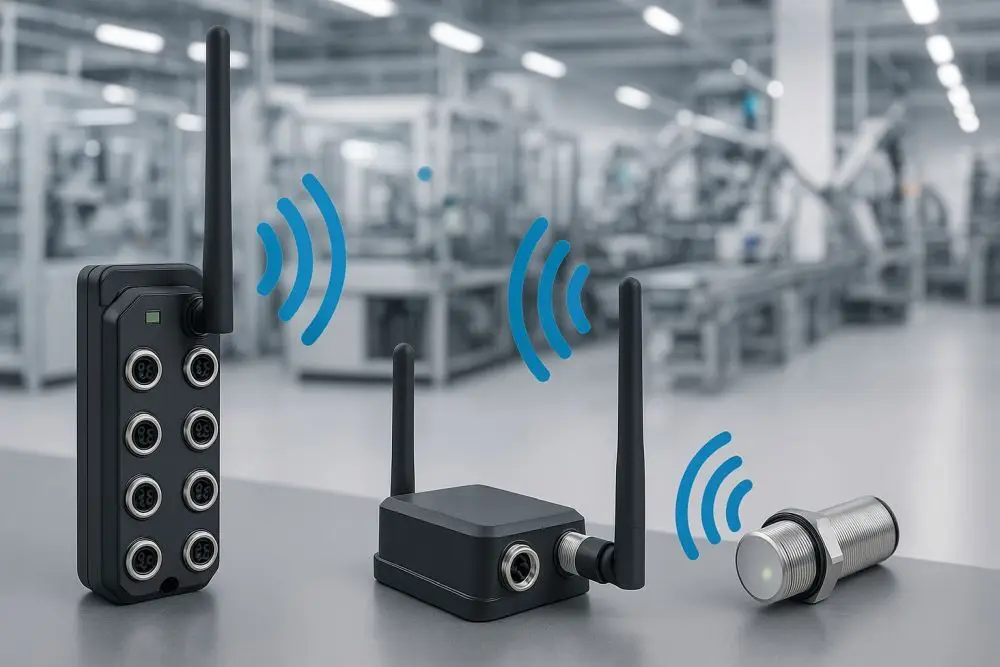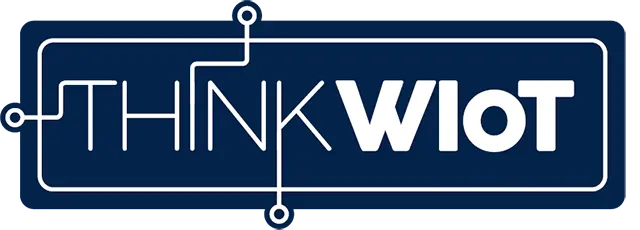IO-Link Wireless: Wireless intelligence for the last mile of automation
IO-Link Wireless revolutionizes industrial automation by enabling wireless, real-time, and interoperable communication at the last mile, offering practical benefits that will drive its broad adoption in the near future.
- Published: August 06, 2025
- By: Anja Van Bocxlaer
- Read: 6 min
- IO-Link Wireless enables wireless point-to-point communication compliant with IEC 61131-9, enhancing flexibility in industrial automation.
- Utilizing the 2.4 GHz ISM band allows worldwide deployment with compact, cost-effective components and rapid cycle times from 5 ms.
- The technology supports up to 40 devices per wireless master with very low packet loss and robust interference management.
- Key application areas include rotating systems, mobile robotics, flexible machine modules, and retrofit integration.
- Widespread adoption faces hurdles such as higher costs, skepticism, limited wireless-native sensors, and the need for specialized know-how.

The wireless factory is no longer a vision of the future – it is becoming a reality in real time. IO-Link Wireless represents a decisive step forward: the globally established point-to-point communication between sensors and actuators now also works wirelessly – offering greater flexibility, efficiency, and ease of retrofitting.
What is IO-Link?
IO-Link is a standardized communication system in accordance with IEC 61131-9 that enables bidirectional transmission of process, diagnostic, and parameter data between controllers and field devices. The connection is made via a simple unshielded three-wire cable – without special cables or connectors.
Unlike fieldbuses, IO-Link is not a bus system, but rather pure point-to-point communication. The biggest advantage: manufacturer-independent interoperability. Devices from different suppliers can be easily integrated, centrally parameterized, and intelligently monitored.
What is IO-Link Wireless?
IO-Link Wireless extends the classic IO-Link standard with a wireless transmission layer. The specification was published by the IO-Link Community in 2018. The aim is to replace physical cables – especially in areas with difficult mounting situations, moving parts, or high retrofitting costs.
IO-Link Wireless consists of three components:
Wireless master: Connects to multiple wireless devices via radio and forwards data to the higher-level control system.
Wireless devices: Sensors or actuators with integrated radio technology.
Wireless bridges: Adapters that integrate existing IO-Link devices into the system wirelessly.
Full functionality is retained: Cyclical and acyclical wireless communication and event handling are possible just as with wired IO-Link.
Why 2.4 GHz – and not sub-GHz?
IO-Link Wireless deliberately uses the license-free 2.4 GHz ISM band instead of sub-GHz frequencies such as Wi-Fi or Wi-Fi HaLow. The decision is based on technical, economic, and regulatory reasons:
Advantages of 2.4 GHz at a glance:
✅ Worldwide availability
While sub-GHz bands are regulated differently in different regions (e.g., 868 MHz in Europe, 915 MHz in the US), 2.4 GHz can be used globally. This simplifies the development of products for international use.
✅ Compact antennas & affordable components
2.4 GHz antennas require less space, making them ideal for compact sensor housings. In addition, chips and modules are inexpensive because they are used in large quantities in Bluetooth, Zigbee, and Wi-Fi.
✅ High data rate & low latency
IO-Link Wireless enables cycle times starting at 5 ms, which is crucial for time-critical applications. Sub-GHz standards offer greater range, but lower bandwidths and higher latencies – unsuitable for fast IO communication.
✅ Robust interference management
Thanks to methods such as frequency hopping (AFH), time-controlled transmission, and automatic channel management, IO-Link Wireless works reliably even in busy industrial environments.
Conclusion: While sub-GHz is advantageous for LPWAN and monitoring applications, 2.4 GHz impresses with short response times, high data throughput, and real-time requirements, in other words, where IO-Link is used.
Technical specifications at a glance
Feature | IO-Link Wireless |
|---|---|
Frequency band | 2.4 GHz ISM band |
Communication model | Point-to-point, IO-Link compatible |
Range | Up to 20 m (typical: 5–10 m) |
Cycle time | From 5 ms |
Number of devices/master | Up to 40 |
Packet loss rate | < 10⁻⁹ |
Topology | Star-shaped, scalable via cells |
Areas of application: Where IO-Link Wireless shows its strengths
IO-Link Wireless is used wherever cables are disruptive, impractical, or expensive:
Rotating systems (e.g., gripper arms, turntables)
Mobile robotics (AGVs, AMRs, driverless systems)
Flexible machine modules with frequent reconfiguration
Retrofit projects in which existing IO-Link devices are integrated via a bridge
Distribution and market dynamics
Since the publication of the specification in 2018, IO-Link Wireless has developed from a theoretical concept into a solution that is ready for practical use. Although widespread introduction is still in its infancy, pilot projects and initial series applications show that demand is growing and with it, the market potential.
Balluff
Balluff is one of the first suppliers to offer a complete IO-Link Wireless portfolio:
Wireless masters and bridges
Ready-to-use solutions for robotics, AGVs, and rotating systems
Practical documentation and training
"IO-Link Wireless is extremely reliable and more robust than Wi-Fi or Bluetooth. Even in EMC-intensive environments, the system operates stably and without interference." – Balluff
Turck
Turck relies on robust, hygienic solutions for industry:
Multiprotocol-capable wireless masters
High EMC resistance
Integration into modular machine concepts with interchangeable IO modules
Turck emphasizes cost reduction through reduced cabling and fast commissioning.
Pepperl+Fuchs
Pepperl+Fuchs brings its experience in explosion-proof areas and EMC-critical zones to bear:
Targeted development for rotating components and hard-to-reach areas
Focus on high system availability and low-maintenance communication
IO-Link Wireless complements the classic portfolio with new application scenarios.
Other providers
Companies such as Siemens, ifm electronic, Festo, SICK, and WAGO are already offering initial components or actively developing wireless modules, often still in the context of pilot projects or as a supplement to the wired world.
Challenges for widespread adoption
Despite technical maturity, there are still hurdles to overcome:
Costs: Wireless modules are currently still more expensive than cable variants, especially in large quantities.
Skepticism toward wireless: In many industrial sectors, wireless communication is viewed with uncertainty, especially in EMC-sensitive applications.
Product availability: Wireless-native IO-Link sensors are still rare – adapter solutions dominate.
Know-how: Planning, network design, and fault analysis require training and new tools.
Positive signs: The market is waking up
Modular production and mobile systems are key drivers
OEMs in the DACH region are launching their first series applications
Engineering tools such as TIA Portal and Codesys simplify integration
IO-Link community promotes dissemination through white papers, training courses, and events
Regional development
Region | Market penetration |
|---|---|
DACH | Leading, many pilot projects and first series applications |
Asia | Growing demand in robotics and electronics manufacturing |
USA/Canada | Cautious, focus remains on Ethernet-based systems |
Southern Europe/Eastern Europe | Low penetration, but growing interest among OEMs |
Middle East/Latin America | Individual projects, but market still barely visible |
Outlook: When will IO-Link Wireless become standard?
Experts expect IO-Link Wireless to break through in the next two to four years, especially in:
Retrofit projects
Mobile robotics and intralogistics
Modular machine models
Hygienic or rotating applications
The key: more native wireless sensor technology, lower entry costs, and standardized engineering processes.
Conclusion: Get started now and secure your competitive edge
IO-Link Wireless is at the beginning of a dynamic growth phase. The technology is ready – and the market is beginning to systematically tap into it. Companies that invest early in industrial-grade wireless communication will benefit from shorter commissioning times, more flexible production, and a new level of digital transparency on the last mile to the machine.

